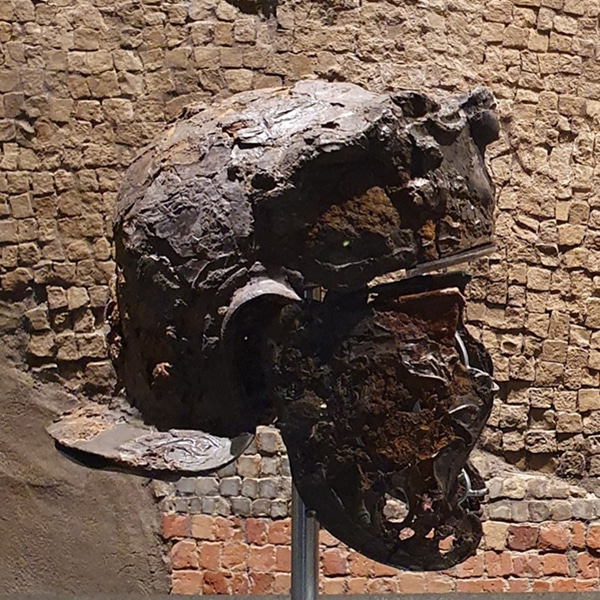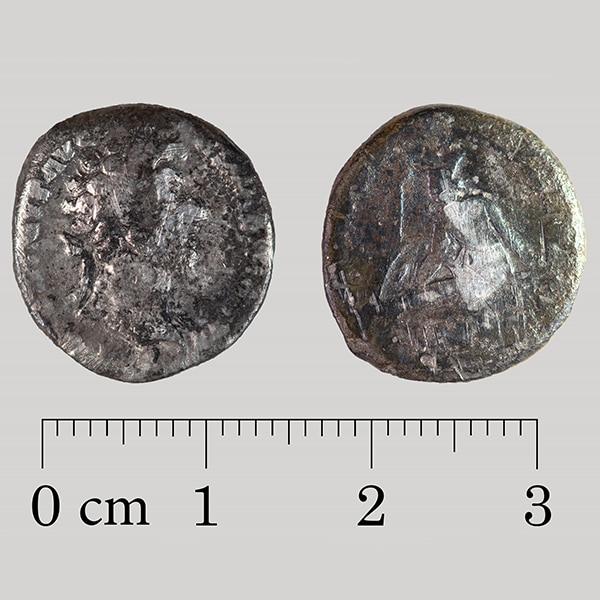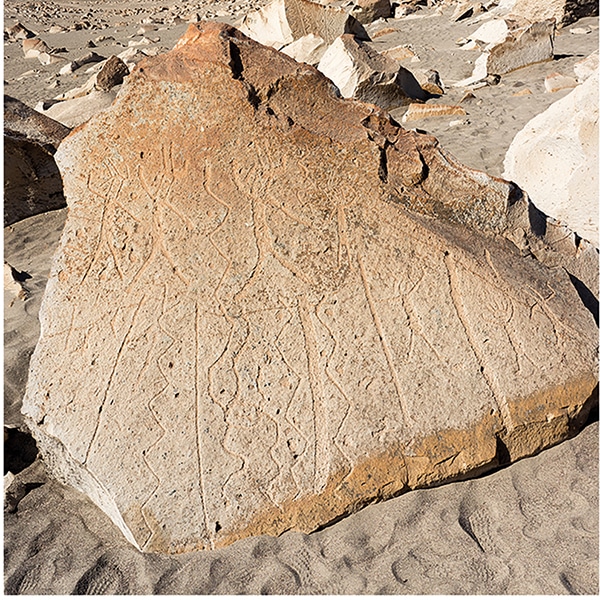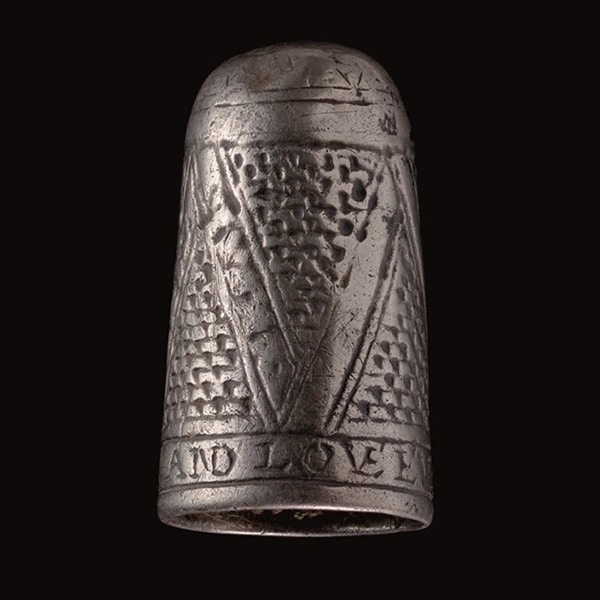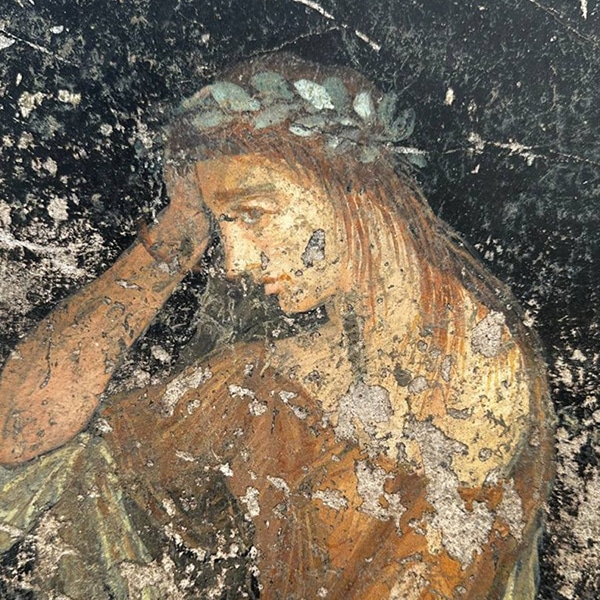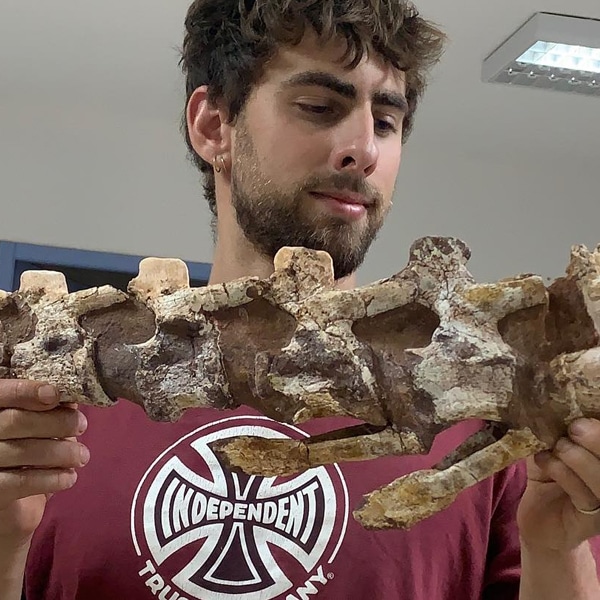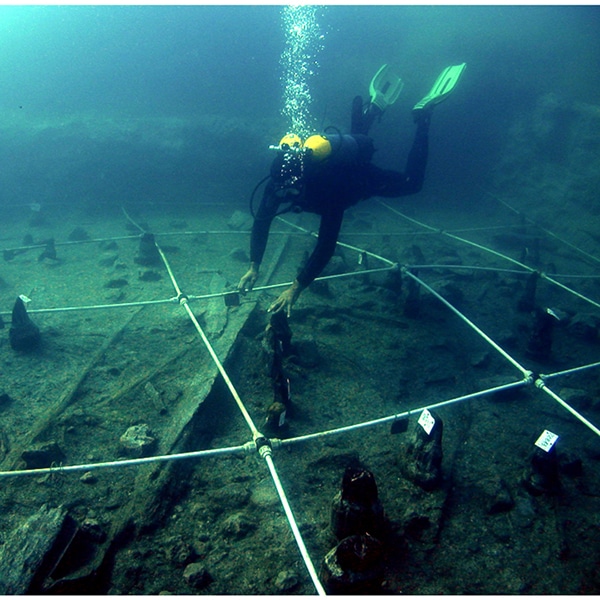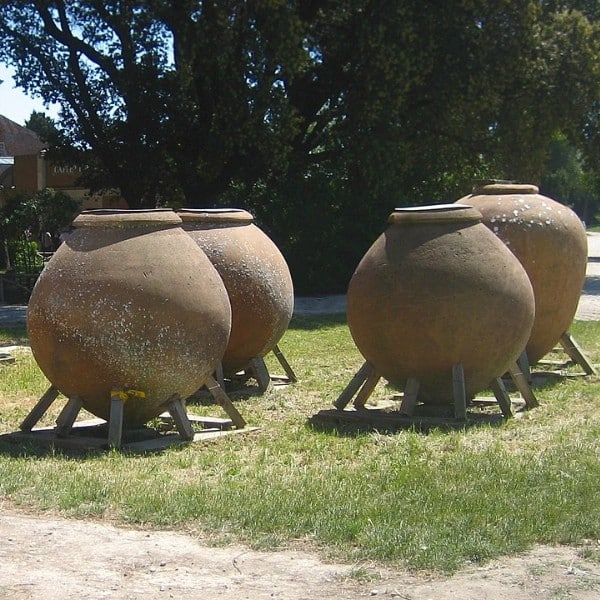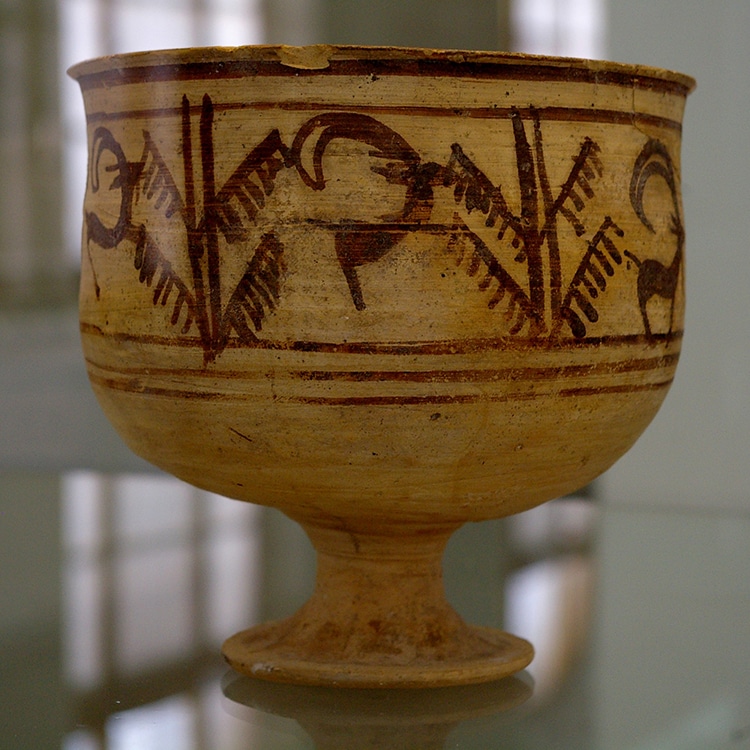
The “Burnt City” goblet discovered in Shahr-e Sookhteh, Iran. (Photo: Emesik via Wikimedia Commons, CC BY-SA 3.0)
Flipbooks are a common craft among children. By repeatedly sketching a stick figure on the edges of a pad of paper or Post-it notes and flipping it back, you can see the drawing move. These crafts are more than mild amusement, they are also the essence of how sequential art was born and an intriguing way to tell stories. While animation emerged as a well-known art form through the movies of the 20th century, archeologists discovered the earliest example of animation on a 5,000-year-old Iranian goblet painted with a horned creature and a tall plant. Discovered in “Burnt City,” Shahr-e Sukhteh, in modern Iran, the vessel has captured imaginations.
The scenes painted around the vessel depict a wild goat, likely a Persian desert Ibex or Persian wild goat, also known as a Capra aegagrus. It approaches to nibble on a tall plant while standing on four legs, then it runs and leaps to reach the higher foliage. This pattern would in theory repeat if the vessel was spun repeatedly, amusing the viewer. Although discovered in the 1970s during the major excavations of Shahr-e Sukhteh, the “moving picture” was not discovered for some time.
The area where the vessel was found in Iran was a critical early site of complex civilization. It is now a UNESCO World Heritage site due to the incredible remains of a mud brick city that sprung up at the crossroads of important trade routes. The development is described as an “outstanding example of early urban planning.” Other Bronze Age vessels decorated in geometric paintings were also found at the site. Excavations are ongoing and have also uncovered gravesites. The vessel and its iconic animation are now in the collection of the Iran National Museum.
This ancient goblet from five thousand years ago was discovered at an ancient site in Iran, and it features the earliest known animation.

The vessel's decorations “unwrapped.” (Photo: Wikimedia Commons, Public Domain)
As you spin the vessel, the horned creature runs and leaps.
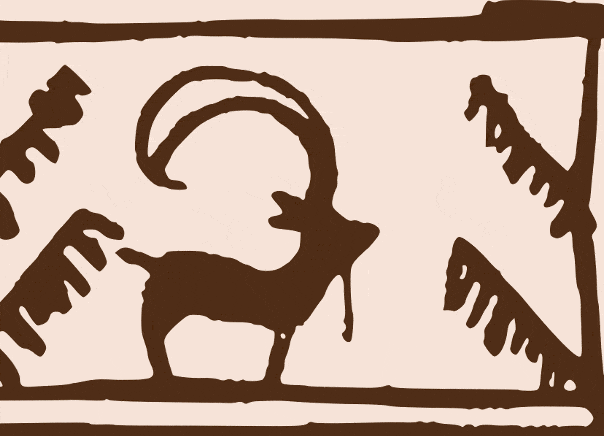
An animation that one would see spinning the vessel. (Photo: Wikimedia Commons, CC BY-SA 3.0)
h/t: [Open Culture]
Related Articles:
Art History: Ancient Practice of Textile Art and How It Continues to Reinvent Itself
Sister Duo Weaves Textured Wall Hangings Inspired by Australian Landscapes
How to Crochet: Learn the Basics of This Time Honored Handicraft
Artist Fills Forest with Life-Size Sculptures Made from Woven Rods of Willow












































































